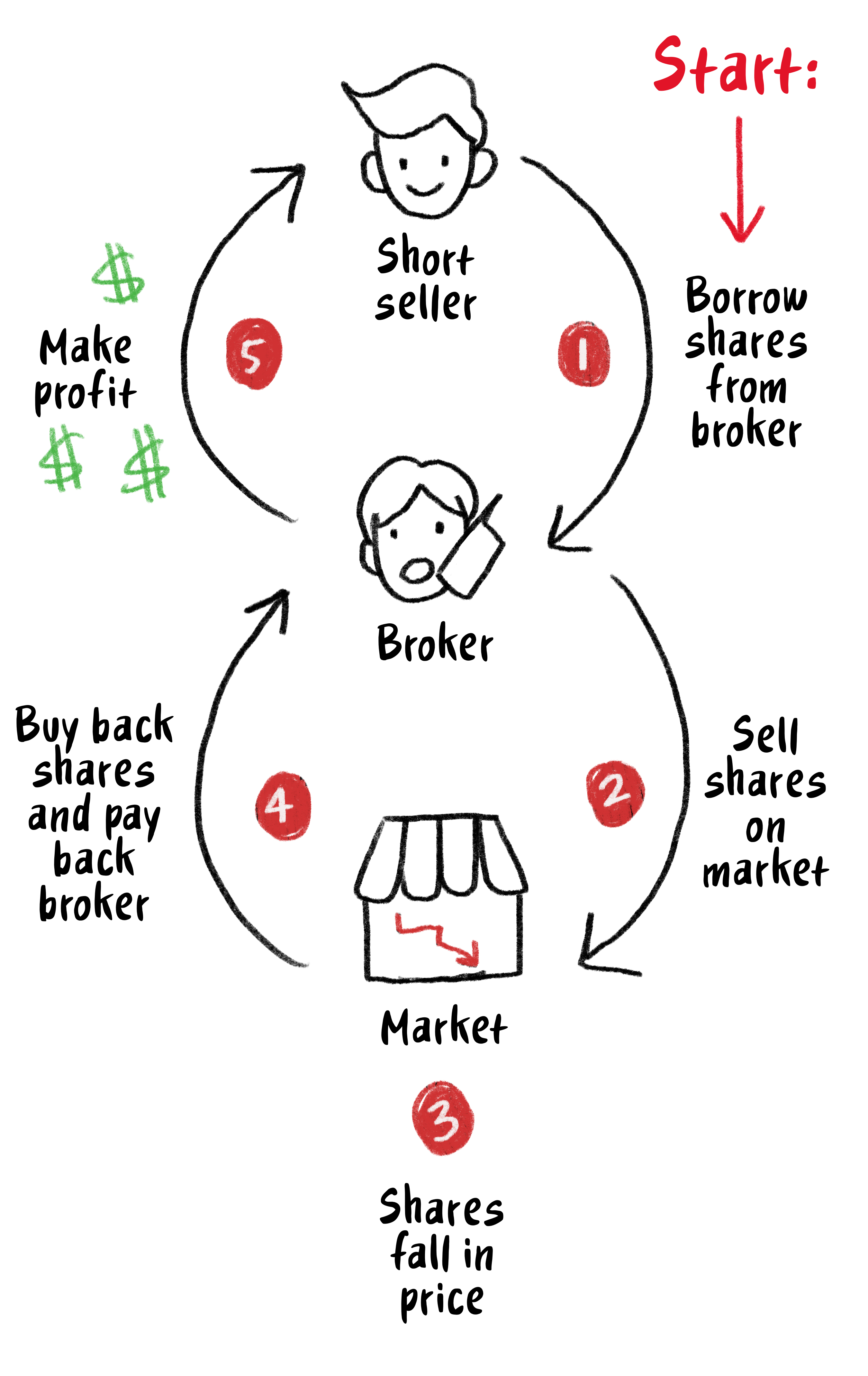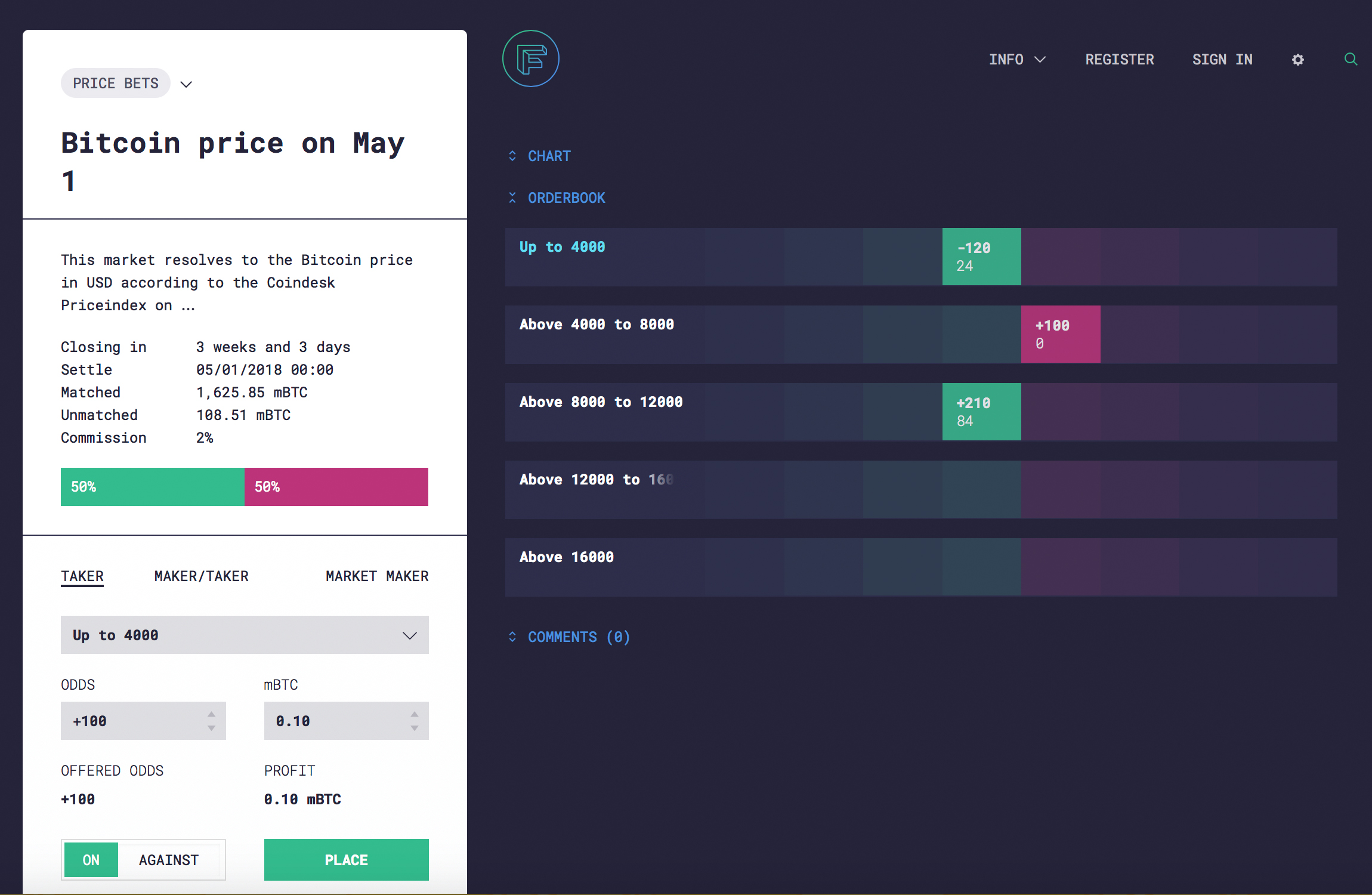You may have noticed that even though the price of Bitcoin is supposed to “always go up”, it doesn’t always do. This is normal for a free market: news, changes in the macroeconomic climate, and investor sentiment can drive the price both ways. It is even possible to make a profit from bearish price action, and in this guide, we will tell you all you need to know about how to short Bitcoin.
Key Takeaways
- To short Bitcoin, you will need to engage in crypto derivatives trading. These financial products and contracts let you capitalize on the price of an asset under certain conditions without necessarily holding it;
- Short selling involves a contract between traders that opens with a purchase of an underlying asset, in our case, Bitcoin. A short position is closed upon selling the asset, and if the price has declined, the trader takes a profit;
- Shorting BTC is available on most major exchanges and some OTC platforms. It is not universally available across all platforms due to complex regulations and increased risks of this mode of trading.
A Guide to Definitions — Short, Futures, Derivatives

Before getting started, let’s take a moment to make sure you are all caught up on the terms that will be heavily featured in the guide. Even if you know what the words mean, how about a refresher?
To begin with, we will have to know what are financial derivatives. This is a type of financial instrument that gets its name from the fact that it derives its value from an underlying asset or reference rate. For the purposes of this guide, you have to be familiar with financial contracts: an agreement between two parties to buy or sell an underlying asset at a specified price and time in the future. The value of such a contract is determined by the price movements of an asset it represents.
Therefore, if you trade Bitcoin on the futures market, you are dealing with a financial instrument that tracks the changes in BTC’s price. Since it is the same as trading a derivative, it does not entail actually either buying Bitcoin or selling BTC, unlike in spot trading where the contract is resolved “on the spot”. As a result, traders can manage risks better and gain exposure to Bitcoin without worrying too much about custody or ownership.
What is a futures contract?

By definition, in a futures contract, two parties agree to buy or sell a specific asset, such as Bitcoin, at a predetermined price and date in the future. Futures contracts have specific details such as the underlying asset (e.g., Bitcoin), contract size, expiration date, and settlement method. Each exchange may have its own set of contract specifications.
To enter one, you need to deposit an initial margin: a percentage of the contract’s notional value. Furthermore, to keep the position open, you need to maintain a maintenance margin. If the account balance falls below the maintenance margin, you may receive a margin call from the broker and even risk having your position liquidated.
Aside from the confidence regarding where the price will go, why else would you want to consider futures? Futures trading can involve leverage, letting traders control a larger position with a smaller amount of capital. For example, if you have 10x leverage, a $1,000 investment would allow you to control a $10,000 position. Leverage amplifies both profits and losses.
What is short selling?

And now, we are getting closer to the point: in futures trading, you can take either a long or short position.
A long position means you agree to buy the asset at a later date, while a short position means you agree to sell the asset. Traders take these positions based on their market outlook.
Short selling is a trading strategy of borrowing and selling an asset with the expectation that its price will decline. The idea behind short selling is to profit from a falling market or to hedge against potential losses.
The process of shorting BTC would look like follows: to open a short position, a trader borrows BTC from another party (broker or another investor) and sells it at the current market price. Later, after a price has declined, they buy it back and return the loan by the contract expiry date. The difference between the price at which BTC was first sold and the price at which it was bought back makes up the profit from a short trade.
Even without leverage, it is evident that trading Bitcoin like this carries larger risks. In the event of a price increase, a trader may be forced to close the position at a loss. Not to mention, shorting involves counterparties and requires trust in them. Nevertheless, it is a powerful tool for traders and investors to profit from downward price movements, albeit one that requires careful analysis and risk management.
Can you short-sell Bitcoin?
Like most financial assets, cryptocurrencies are also represented in derivatives markets. There are many crypto exchanges that offer derivatives trading in addition to spot.
So yes, it is possible to short-sell Bitcoin (BTC). It involves borrowing BTC from a lender, usually a broker or an exchange, and then selling it on the market with the expectation that its price will decline. If the price does indeed drop, the investor can buy back Bitcoin at a lower price and return it to the lender, pocketing the difference as profit.
The most common way to short Bitcoin is on the futures market, as we mentioned before. However, there are also other means of trading that offer this opportunity.
Margin trading is another mode of trading assets, including cryptocurrencies, that nowadays many exchanges offer. The gist of it is using funds borrowed from an exchange or broker instead of trading with own assets. The margin account balance can exceed the collateral placed as the initial margin, so by margin trading, you can gain exposure to assets you don’t own. Just remember that this mode of trading implies that you repay the debt before making profits.
Another type of derivative that lets you take short positions in Bitcoin is Contracts for Difference (CFDs). If you bet that the price of BTC will decline, you open a selling position and close it with a purchase. The difference between the prices is settled in cash, without the delivery of an asset. Another difference between CFDs and futures contracts is the lack of expiry date and time. CFDs inherently have leverage, so it is an advanced trading mode as well, bearing higher risks.
Alternatives to Shorting Bitcoin
There are a couple more ways to benefit from the decline in BTC’s price. If you believe Bitcoin is getting cheaper, crypto traders can also turn to binary options trading or prediction markets.
Binary options

Binary options are a type of financial derivative that allows traders to speculate on the price movement of an underlying asset, such as BTC, within a specified time frame. In binary options trading, traders make predictions about whether the price of BTC will go up or down by a certain expiration time. If their prediction is correct, they receive a fixed payout. If their prediction is wrong, they lose their initial investment.
Binary options trading can provide an alternative way to trade BTC, especially for those who prefer a simple and fixed-risk approach.
Unfortunately, fixed-risk does not mean risk-free. The outcome of each trade is binary, meaning traders can either win a fixed payout or lose their investment entirely. Additionally, the binary options market is rife with scams and unregulated brokers, so choose a reputable and regulated platform if you decide to engage in binary options trading for BTC.
Prediction Markets

In prediction markets, participants buy and sell shares based on the outcome of an event, such as the price of BTC at a certain point in time. In crypto prediction markets, instead of shares, there are tokens.
One example of a platform where you can engage in prediction markets is Augur. Augur is a decentralized prediction market platform on the Ethereum blockchain. It allows users to create and trade special tokens on a wide range of events, including cryptocurrency prices.
To profit from the decline in BTC’s price using Augur, you would need to find a prediction market related to BTC’s price and get or trade its tokens based on your prediction. For example, if you believe that BTC’s price will decline by a certain date, you can buy the tokens that represent this outcome. If Bitcoin’s price declines as you predicted, the value of the shares will increase, allowing you to sell them at a profit.
It’s important to note that prediction markets are volatile and speculative, and the outcome of an event is not always guaranteed. Augur is a decentralized platform, so it’s crucial to do your own research and ensure the credibility and reliability of the markets and participants before engaging in any trading activities.
Where is short-selling Bitcoin possible?
By now, we have learned that short-selling is possible on exchanges or platforms where derivatives trading is available. These days, most major cryptocurrency exchanges and a few OTCs and brokers offer these services.
Large CEXs like Binance, Bybit, and Kraken offer all sorts of leveraged and contract trading, including spot, margin, and futures. BitMEX started out as a crypto derivatives trading platform, so it is best suited for derivatives and leveraged trading and provides adequate regulations for an offshore crypto exchange. Financial derivatives backed by cryptocurrencies are also supported by brokers and OTCs, such as eToro. There you will be able to trade Bitcoin CFDs in addition to other derivatives.
FTX was also a popular platform to trade crypto derivatives and short crypto but due to severe mismanagement, it ended up collapsing. Let this be a lesson to you: before engaging with trading these modes of trading, it’s important to do your own research and consider factors such as fees, security, reputation, and available trading options before choosing where to short-sell Bitcoin.
Knowing the Rules to Play By
Since financial contracts are complex products that carry considerable risks, they are usually heavily regulated, if available at all. For instance, CFDs cannot be offered to U.S. citizens. But how do you regulate a derivative that has cryptocurrency, which is not as legally defined, as an underlying asset?
Well, the answer is, that regulations standard for all types of financial contracts apply to Bitcoin and crypto derivatives. The type of an asset does not matter as much here as the terms of the agreement and trading conditions.
Obviously, specific regulations vary depending on the country or jurisdiction in which the trading platform operates. However, on any of the platforms you can expect to find legal regulations pertaining to the following:
- Trading platforms offering cryptocurrency derivatives may be required to obtain licenses or register with regulatory authorities. These licenses ensure that the platform meets certain standards and is operating legally.
- Platforms may be required to implement Anti-Money Laundering (AML) and Know Your Customer (KYC) procedures to prevent money laundering, terrorist financing, and other illegal activities. This typically involves verifying the identity of users and monitoring transactions.
- Some jurisdictions impose specific margin requirements and limits on leverage for cryptocurrency derivatives. This is done to protect traders from excessive risk and ensure the stability of the market.
- Regulatory measures may be in place to protect investors, such as requiring platforms to disclose risks associated with trading cryptocurrency derivatives and ensuring fair and transparent pricing.
Therefore, in addition to doing your homework on the platform you chose for trading, you should also be aware of the jurisdiction it operates from and its applicable laws and regulations. Knowing the laws of your own country and jurisdiction and ensuring there is a match with the platform is also a must.
But Why Short Bitcoin?
This is an opinion controversial in some circles of crypto enthusiasts but line, in fact, does not always go up, and it’s okay. Bitcoin and the crypto market go through some long-term cycles tied to halving but also experience volatility in the short-term time frames. Market conditions and sentiment influence the prices, and there is always a chance they will go down. While some prefer long-term holding, others make more money on trading, so it’s optimal to use all kinds of opportunities, including taking profits or shorting.
Other motivators for short-selling Bitcoin can be speculation on a price decline, hedging, market making, and arbitrage opportunities.
Short trading allows traders to profit from a decline in the price of Bitcoin. If they believe the Bitcoin price will decrease, they can borrow BTC from a broker, sell it at the current market price, and then repurchase it at a lower price in the future. The difference between the selling price and the buying price is their profit.
Short trading can be used as a hedging strategy to mitigate losses in a long position. For example, if an investor holds a significant amount of BTC and wants to protect themselves against potential price declines, they can enter a short trade to offset potential losses in their long position.
Some professional traders engage in short trading to provide liquidity to the cryptocurrency market. By shorting Bitcoin, they can profit from small price movements and help facilitate trading for other market participants.
Short trading can be used to take advantage of price discrepancies between different cryptocurrency exchanges, or simply put, for arbitrage. Traders can borrow BTC on one exchange, sell it at a higher price on another exchange, and then buy it back at a lower price, making a profit from the price difference.
What are the Risks?
By this point in the guide, multiple times we have mentioned the increased risks of short selling Bitcion assets in comparison to spot trading. In any case, it wouldn’t hurt to reiterate them on the upshot.
The risks to consider when short trading Bitcoin are:
- Market Volatility. Prices can fluctuate unexpectedly, and if the asset’s price rises instead of falling, short traders face losses.
- Unlimited Loss Potential. Short trading has no limit on potential losses if the asset’s price significantly rises.
- Margin Calls. Borrowing assets or using leverage can result in margin calls, where additional funds or assets may be demanded as collateral, or the position will be automatically closed.
- Short Squeeze. A rapid increase in the asset’s price due to many short traders covering their positions can lead to significant losses.
- Timing Risk. Accurate timing is crucial to profit from a decline in an asset’s price, making it challenging to predict market movements.
- Counterparty Risk. Borrowing assets from a counterparty, such as an exchange or broker, introduces the risk of default or insolvency on their part.
The list is long but if you know what you are doing, the payoff can be worth it. So, take your time to consider if you really want to start short-selling crypto, and best of luck to you!
Conclusion
Shorting BTC is a valid trading strategy to profit off the market shifts. It is not recommended to newcomers, who may be better off taking the profits or waiting out on a bearish streak. Even experienced traders can miss and lose on these trades but if the stars align, even a loss of value for Bitcoin can turn into a profit for you.
Did you find our guide useful? Feel free to share what you think on our Telegram, X (Twitter), Reddit, and Facebook. While you’re at it, follow us so as not to miss out on any updates and content! For even more guides for exploring the crypto world, take a tour around the ChangeHero blog.








